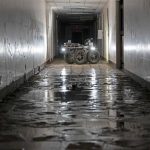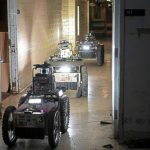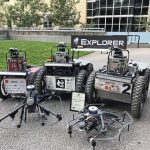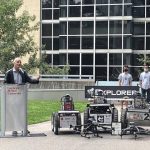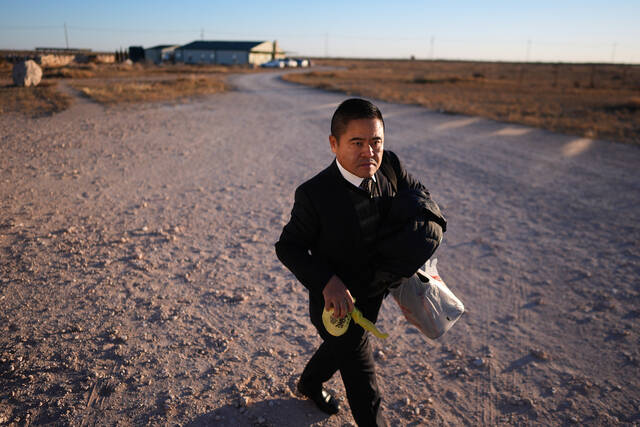Carnegie Mellon University’s team of students, faculty, staff and robots placed fourth in a major competition testing how well their robots could navigate an underground course simulating a search-and-rescue mission.
Called Team Explorer, the university’s team traveled this week to the Defense Advanced Research Project Agency (DARPA) challenge in Louisville, Ky., which wrapped up Friday. DARPA challenges give teams the chance to tackle problems with real-world implications — in this case, by exploring new ways to use autonomous subterranean robots to aid in search-and-rescue efforts.
The team used a combination of walking robots, ground robots and drones — all of which had autonomous capabilities and were specially equipped for underground missions — to navigate a cavern, a mine, a cave and an abandoned subway station, all built inside the Mega Cavern in Louisville for the contest.
“We got most of it,” Matt Travers, team co-lead, said from the competition. “We explored almost all of the map.”
Team Explorer’s fleet of robots mapped nearly the entire course, exploring more than any other team during the final round.
“I’m proud of this team,” Travers said. “This was hard, and we really rose to the challenge.”
The first place team, called CERBERUS, was a collaboration between the University of Nevada, Reno, ETH Zurich, Sierra Nevada Corporation, University of California, Berkeley, Flyability, the Norwegian University of Science and Technology and the University of Oxford.
During the competition, the robots were tasked with navigating tunnels, walking up and down stairs and using sensors to monitor their surroundings. The autonomous bots were asked to find objects scattered throughout the course and report the location back to the team.
Team Explorer submitted 17 found objects to DARPA, using three ground robots, a dog-like robot named Spot, three small drones and a large drone.
The skills showcased in the contest could be adapted to navigate real-world search-and-rescue efforts, where humans typically can’t begin exploring until after they can ensure the site is safe. Robots, however, could begin working immediately.
“They are doing the fundamental research that will make this potentially life-saving technology possible,” said team co-lead Geoff Hollinger, a Carnegie Mellon robotics alumnus and associate professor of mechanical engineering at Oregon State. “And Team Explorer has already proven that their approach is among the best in the field and has a pathway to commercialization.”






